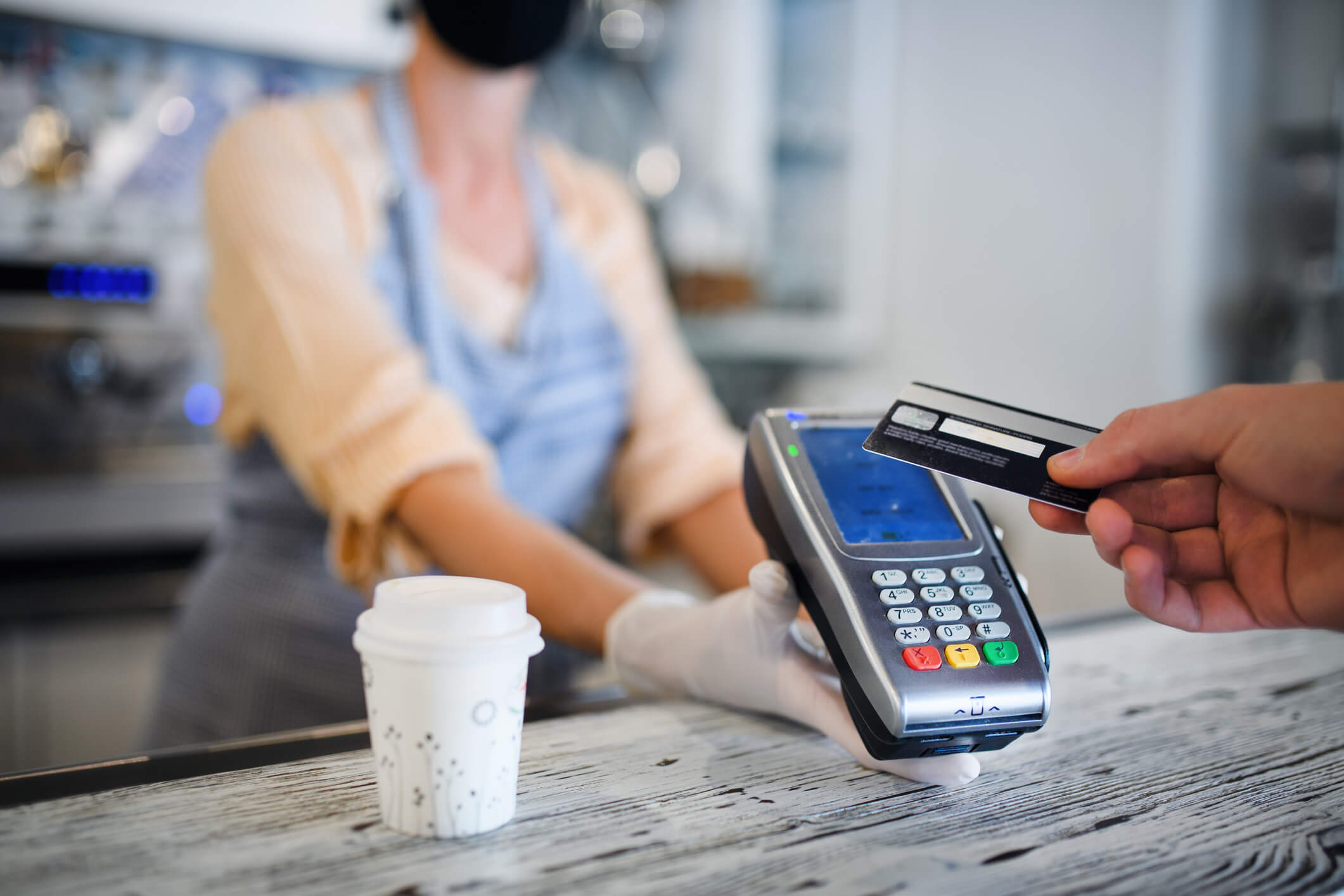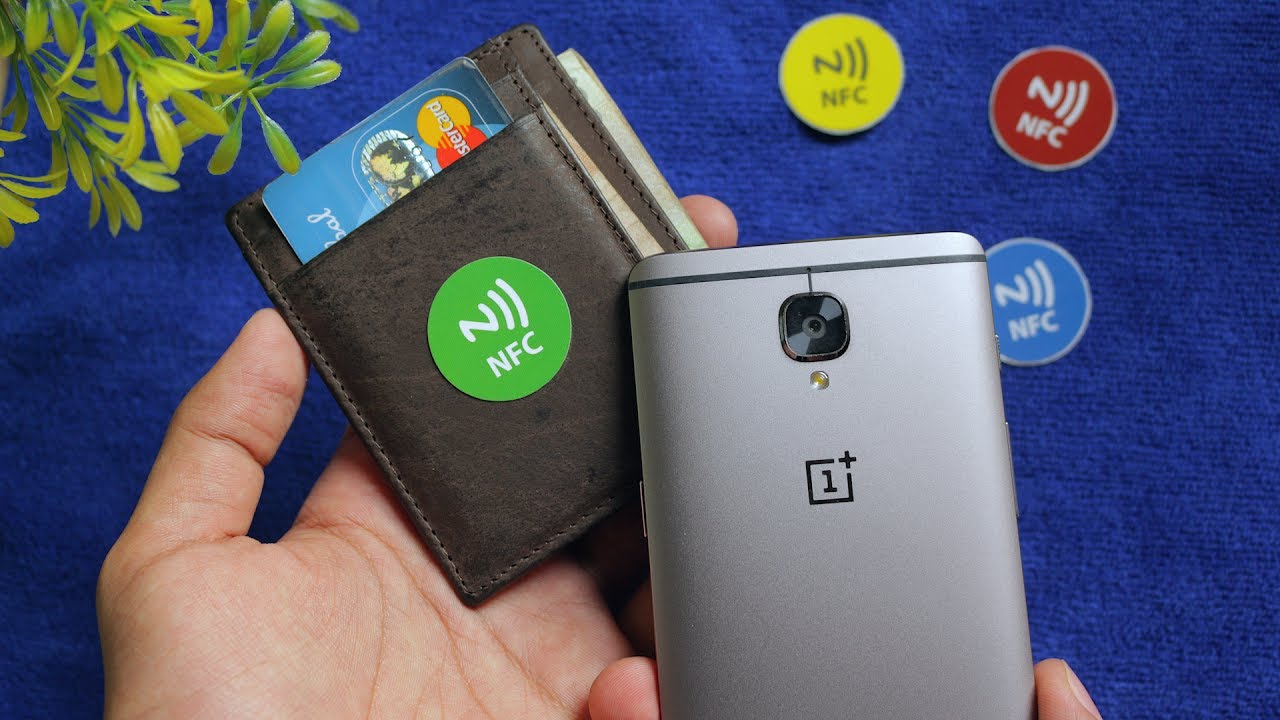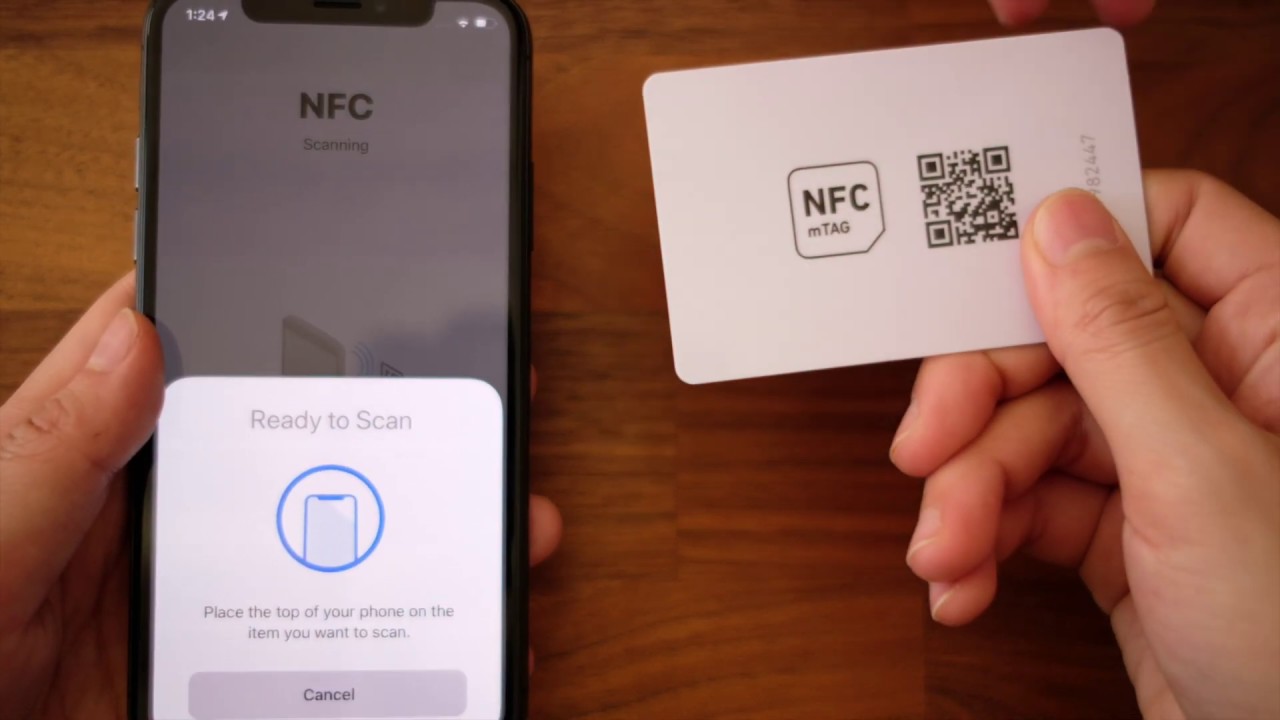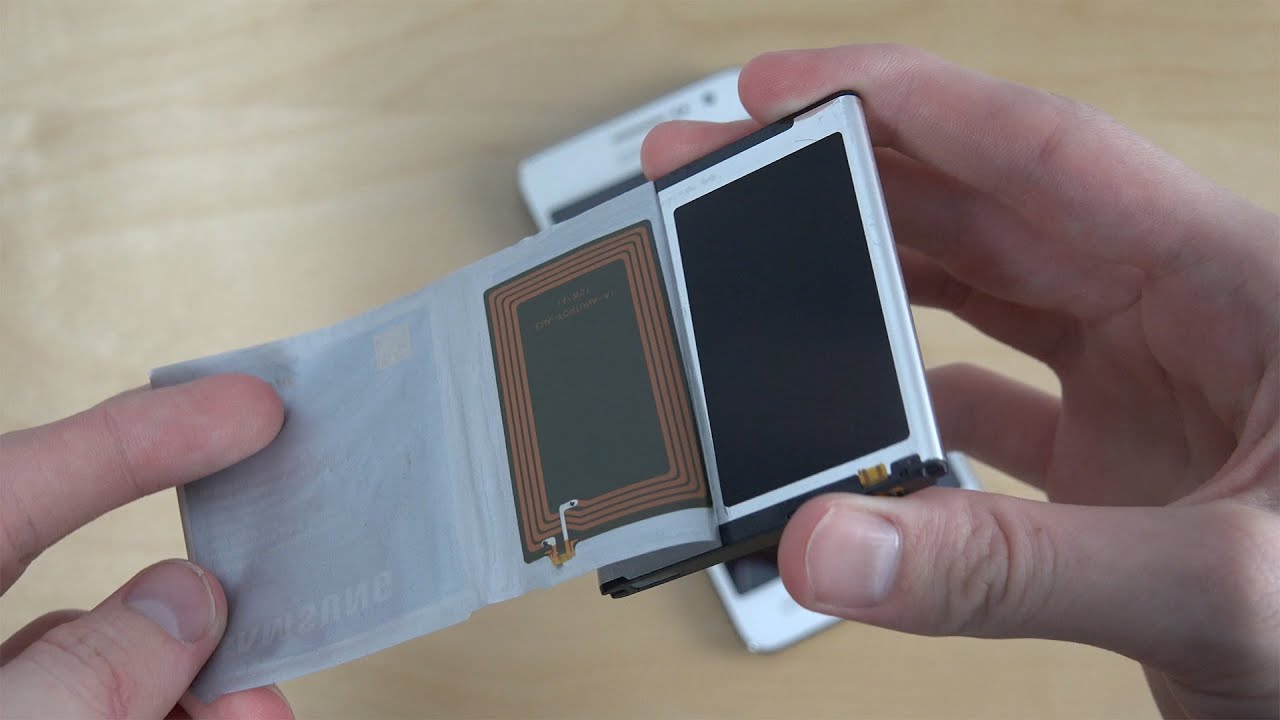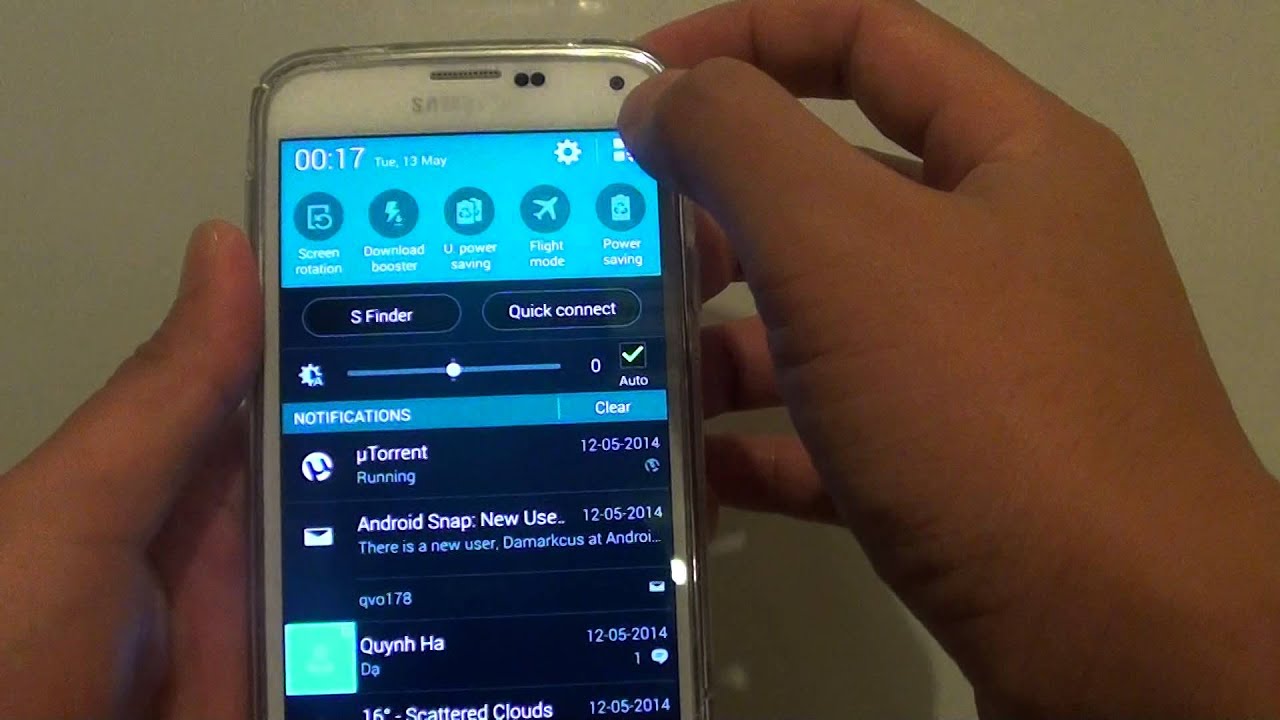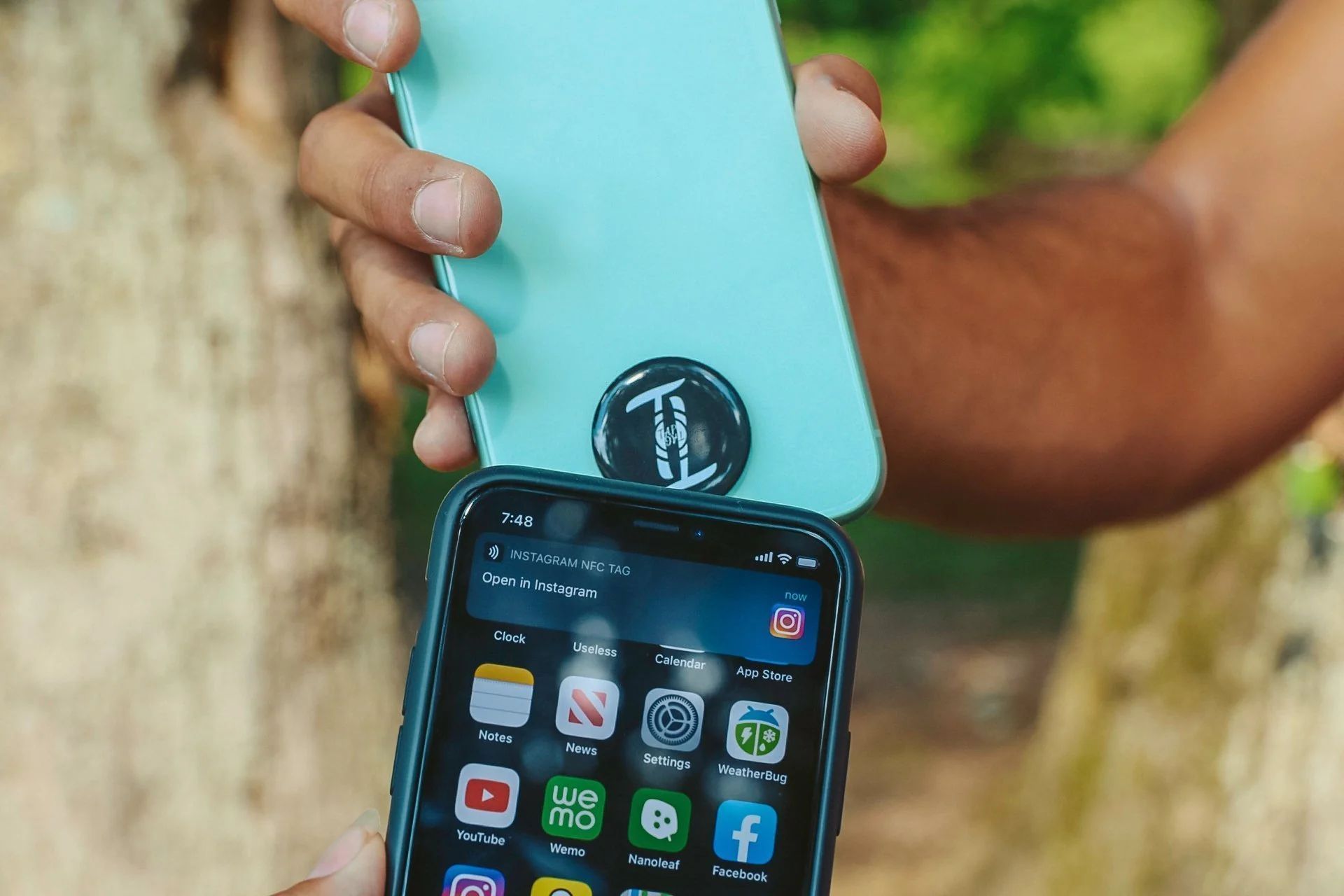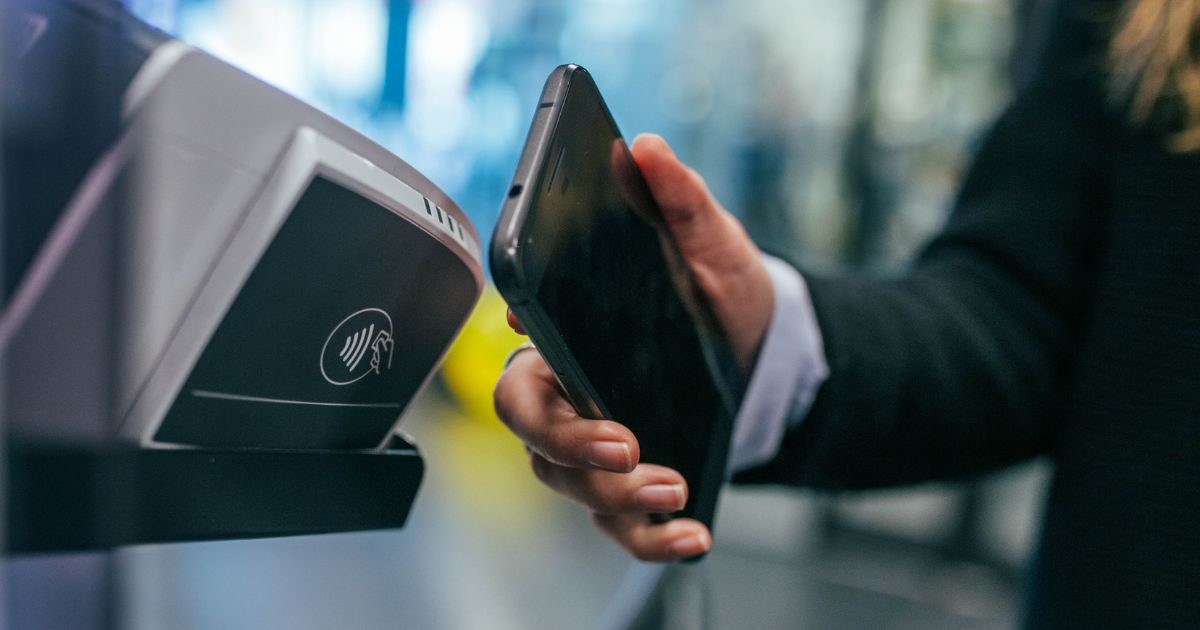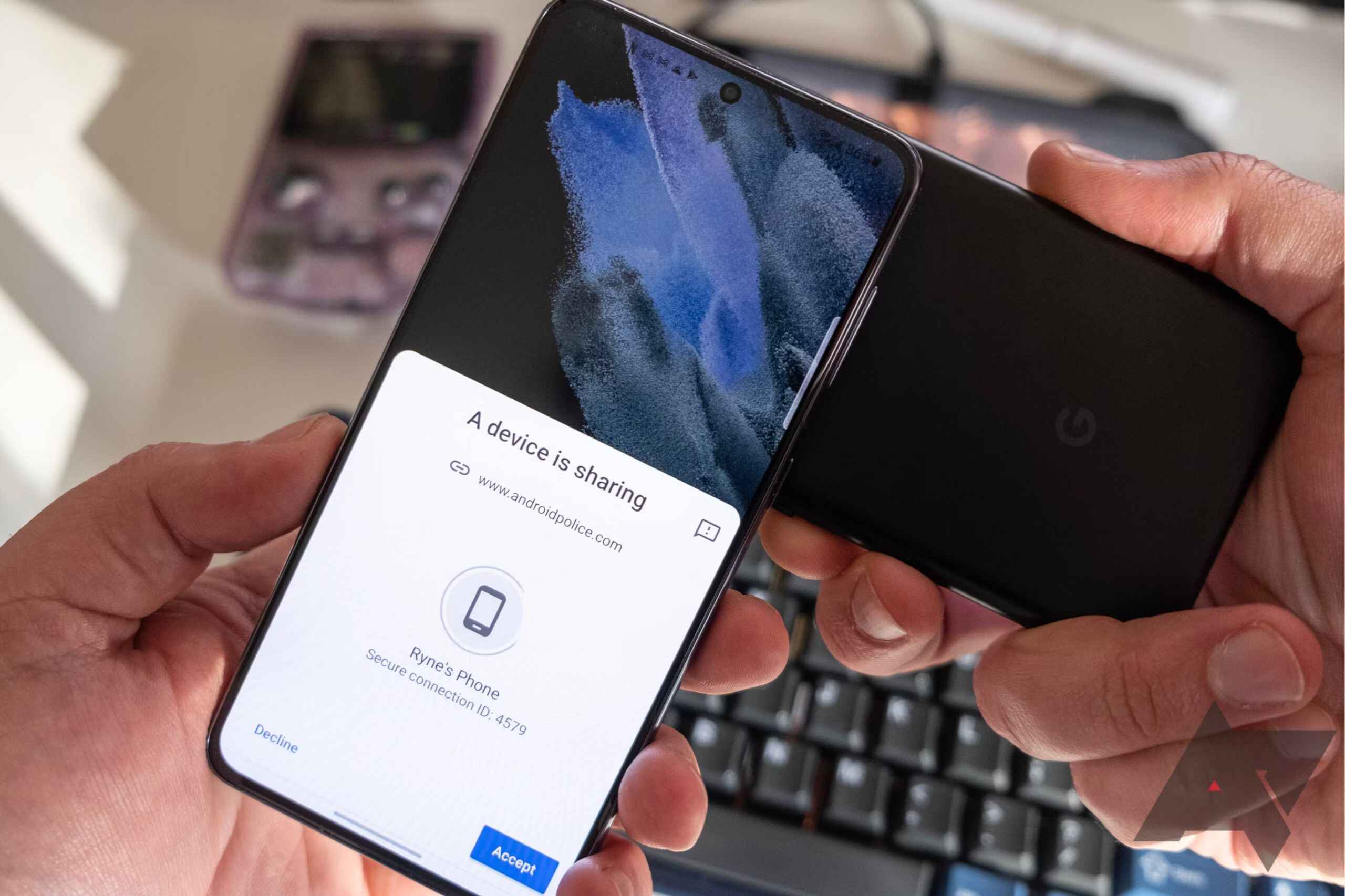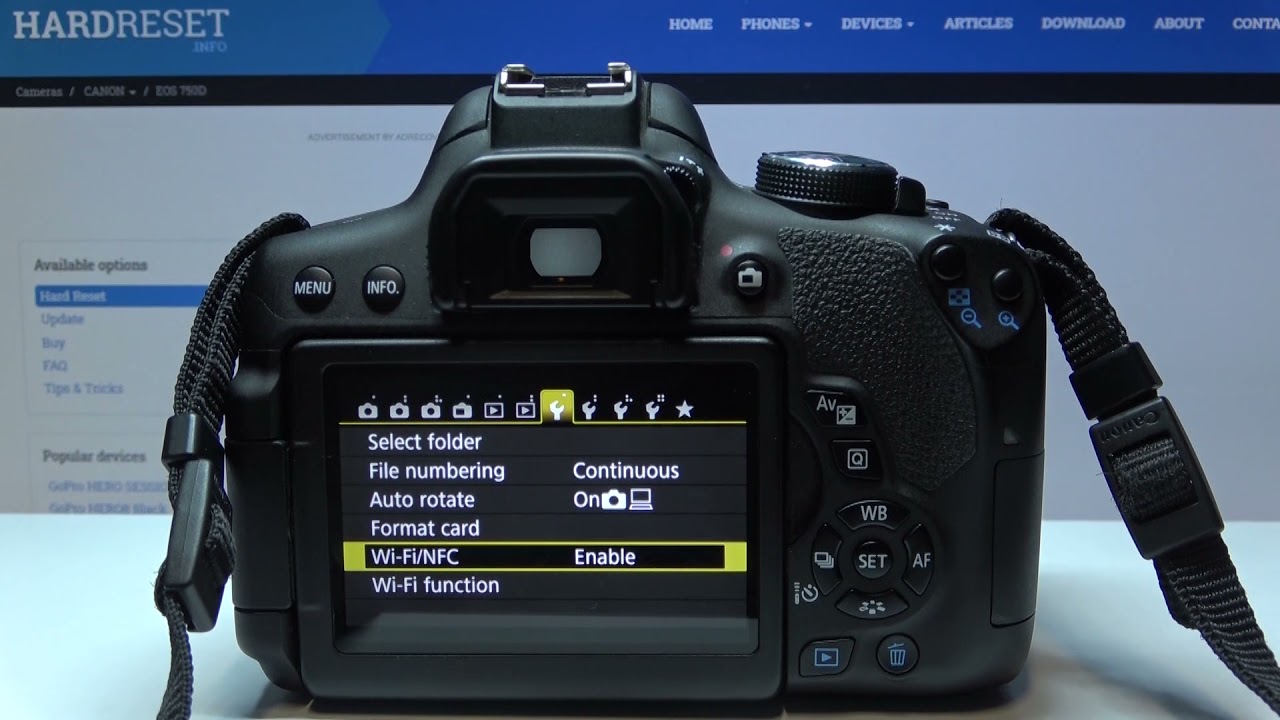Introduction
Welcome to the world of NFC! Near Field Communication (NFC) is a wireless communication technology that allows devices to exchange information over short distances. Its versatility and convenience have made it increasingly popular in various industries and applications. In this article, we will explore the different uses of NFC and how it has transformed the way we interact with technology.
NFC is most commonly associated with contactless payments, where you can simply tap your smartphone or payment card to make transactions. However, its potential goes far beyond just payments. NFC can be used for access control, public transport tickets, loyalty and rewards programs, electronic business cards, smart posters and advertising, social media and sharing, gaming, health and fitness tracking, home automation, and much more.
By understanding the possibilities of NFC, you can unlock a world of convenience and efficiency. Whether you’re a business owner, a tech enthusiast, or simply curious about the latest innovations, this article will shed light on the endless opportunities that NFC brings to the table.
Contactless Payments
Contactless payments have revolutionized the way we make transactions, offering a seamless and secure alternative to traditional payment methods. NFC technology plays a key role in enabling contactless payments, making it quick and convenient for consumers.
With contactless payments, you can simply tap your smartphone, smartwatch, or payment card on a compatible payment terminal to complete a transaction. This eliminates the need for physical cash or entering a PIN. The process is not only faster but also more hygienic, reducing the risk of touching potentially contaminated surfaces.
One of the main advantages of NFC-powered contactless payments is their widespread acceptance. Many retailers, restaurants, and transport systems now support this method, allowing customers to pay with ease. The transaction limits for contactless payments are continuously increasing, enabling users to make larger purchases without entering a PIN.
Security is a top priority in contactless payments. NFC technology employs encryption and authentication mechanisms to ensure that the transaction data is protected. Additionally, most payment providers offer additional security features such as tokenization, where a unique virtual account number is used instead of the actual card information, further enhancing the safety of contactless payments.
Contactless payment systems also offer the convenience of storing multiple payment cards on a single device. This means you can leave your bulky wallet at home and easily switch between different cards when making a payment. Some mobile wallet apps even allow you to store loyalty cards and coupons, streamlining the entire shopping experience.
Overall, contactless payments have revolutionized the way we handle transactions. With the ability to make quick, secure, and convenient payments using NFC technology, it’s no wonder why contactless payments are becoming the preferred choice for consumers and businesses alike.
Access Control
NFC technology has greatly simplified access control systems, making them more efficient and secure. Traditionally, access control involved physical keys, access cards, or PIN codes, which can be lost, stolen, or forgotten. With NFC-enabled access control, the process becomes seamless and hassle-free.
Using NFC-enabled access control systems, individuals can use their smartphones or NFC-enabled cards to gain entry to secured areas. By simply tapping or waving their device near the access control reader, the individual’s identity is instantly verified, granting or denying access as per the configured permissions.
One of the key benefits of NFC-based access control systems is the ease of managing access privileges. Instead of physically issuing and managing traditional access cards, administrators can remotely update access permissions for individuals. This eliminates the need for physically collecting and reissuing access cards, saving time and resources.
NFC access control systems also offer enhanced security features. The use of encryption and authentication protocols ensures that only authorized individuals can gain access. Furthermore, the ability to integrate with other security systems, such as CCTV cameras or alarm systems, enhances the overall security measures of the facility.
Additionally, NFC technology allows for easy monitoring and tracking of access events. System administrators can generate detailed logs of access activities, allowing for better visibility and analysis. This data can be useful in identifying any suspicious behavior or patterns, enabling prompt action to maintain a secure environment.
Beyond traditional access control systems, NFC technology can also be used for other applications, such as unlocking hotel rooms or accessing shared workspaces. NFC eliminates the need for physical keys or keycards, making the process more convenient for guests and employees alike.
In summary, NFC-driven access control systems offer a convenient, secure, and efficient solution for managing access to restricted areas. With the ability to use smartphones or NFC-enabled cards, organizations can streamline their access control processes while enhancing security measures.
Public Transport Tickets
NFC technology has transformed the way we access and use public transport, offering a convenient and efficient alternative to traditional ticketing systems. NFC-powered public transport tickets make commuting a breeze, eliminating the need for physical tickets or cards.
With NFC-enabled public transport ticketing, passengers can simply tap their smartphones, smartwatches, or contactless cards on the designated readers to validate their journey. This process is quick and seamless, reducing the time spent waiting in line or fumbling for the correct fare.
One of the main advantages of NFC-powered public transport tickets is their versatility. NFC devices can be used across multiple transportation systems, allowing passengers to seamlessly transfer and use the same ticket on buses, trains, trams, and even ferries. This simplifies the travel experience and eliminates the need to purchase separate tickets for different modes of transportation.
NFC-based public transport ticketing systems also offer flexible payment options. Passengers can choose to use stored value cards, where they load a certain amount of money onto their NFC-enabled device and the fare is deducted with each tap. Alternatively, passengers can opt for contactless payment methods linked to their bank accounts or mobile wallets, providing even more convenience.
Another benefit of NFC-based public transport ticketing is the ability to easily manage and reload tickets. Passengers can effortlessly top up their NFC-enabled devices using self-service kiosks or mobile apps, ensuring that they always have enough credit for their journeys. This eliminates the hassle of purchasing physical tickets or cards each time, saving time and reducing paper waste.
NFC technology also enables seamless integration with existing transportation systems, such as real-time journey updates and fare collection. Passengers can receive notifications about delays, route changes, or service disruptions directly on their NFC-enabled devices, keeping them informed throughout their journey.
Overall, NFC-powered public transport tickets have simplified the commuting experience, offering a convenient, versatile, and efficient way to travel. With the ability to use smartphones, smartwatches, or contactless cards, passengers can enjoy a seamless and hassle-free journey, reducing the reliance on traditional ticketing systems.
Loyalty and Rewards Programs
NFC technology has revolutionized loyalty and rewards programs, providing businesses with a powerful tool to engage customers and enhance their shopping experience. NFC-enabled loyalty programs offer convenience, personalization, and an incentive for customers to keep coming back.
With NFC-powered loyalty and rewards programs, customers can simply tap their smartphones or NFC-enabled cards at the point of sale to earn and redeem loyalty points or rewards. This eliminates the need for physical loyalty cards or collecting paper-based coupons, streamlining the process for both customers and businesses.
NFC technology allows for real-time interaction with customers. Businesses can send personalized offers, recommendations, or special promotions directly to the customer’s NFC-enabled device. This targeted approach enhances the customer experience and encourages repeat purchases.
Additionally, NFC loyalty and rewards programs enable businesses to gather valuable data and insights about customer behavior and preferences. With permission from customers, businesses can track their purchase history, preferences, and demographics. This data can be used to personalize offers, improve product offerings, and tailor marketing strategies to specific customer segments.
NFC loyalty programs also simplify the redemption process for customers. Points or rewards are automatically deducted or added to the customer’s account with a simple tap. This eliminates the need for customers to carry physical vouchers or remember complex redemption procedures, enhancing the overall customer satisfaction and engagement.
NFC loyalty and rewards programs can be easily integrated with mobile wallet apps. Customers can store their loyalty cards digitally on their smartphones, consolidating all their reward programs in one place. This reduces the clutter of physical cards and ensures that customers never miss out on earning or redeeming their rewards.
Furthermore, NFC technology allows for seamless integration with other digital marketing channels, such as social media and email marketing. Businesses can leverage NFC to encourage customers to share their loyalty program experiences on social media or provide feedback directly from their NFC-enabled devices. This helps businesses to expand their reach, foster brand advocacy, and enhance customer relationships.
In summary, NFC-powered loyalty and rewards programs provide businesses with a powerful tool to engage customers, personalize offers, and gather valuable data. With the convenience and ease of NFC technology, businesses can create a seamless loyalty program experience that not only enhances customer satisfaction but also drives repeat business and brand loyalty.
Electronic Business Cards
NFC technology has modernized the way business cards are exchanged, making them digital and more convenient. With NFC-enabled electronic business cards, professionals can easily share their contact information with a simple tap, eliminating the need for printing and carrying physical cards.
Electronic business cards utilize NFC tags embedded in smartphones or dedicated NFC cards to transmit personal information, such as name, phone number, email address, and website. By simply tapping their NFC-enabled device on another compatible device, the contact information is securely exchanged.
One of the main advantages of electronic business cards is their ease of use. Gone are the days of fumbling through a stack of cards or worrying about running out of them at important networking events. With a single tap, professionals can instantly share their contact details with potential business partners or clients.
NFC-enabled electronic business cards also offer a more sustainable and eco-friendly solution. By eliminating the need for physical cards, professionals can significantly reduce the amount of paper waste. This not only benefits the environment but also presents a positive and forward-thinking image to clients and partners.
Moreover, electronic business cards provide additional flexibility and customization options. NFC tags can be programmed to include not only contact information but also links to websites, social media profiles, or portfolio samples. This allows professionals to showcase their work or provide additional information about their expertise, creating a more engaging and memorable interaction.
Electronic business cards also simplify the process of organizing and managing contact information. The received digital business card can be easily saved to the recipient’s smartphone contacts or CRM system, eliminating manual data entry and ensuring that the information is easily accessible in the future.
Furthermore, NFC-based electronic business cards can be updated in real-time. Instead of printing new cards every time there is a change in contact details, professionals can simply update their NFC card or smartphone tag, ensuring that every interaction is based on the most up-to-date information.
Overall, NFC-powered electronic business cards provide a modern and convenient solution for sharing contact information. With the simplicity of a tap, professionals can effortlessly exchange digital cards, reduce paper waste, and provide a more engaging and personalized networking experience.
Smart Posters and Advertising
NFC technology has revolutionized the world of posters and advertising, transforming them into interactive and engaging experiences for consumers. NFC-powered smart posters combine traditional advertising with digital capabilities, offering businesses a unique way to connect with their target audience.
Smart posters are embedded with NFC tags, which can be tapped or scanned by NFC-enabled smartphones or devices. This interaction triggers a variety of actions, such as displaying additional product information, playing videos, providing discounts or coupons, or redirecting users to a specific website or social media page.
One of the key advantages of smart posters and advertising is their ability to capture the attention of consumers. Traditional posters may grab someone’s attention visually, but NFC adds an interactive element that encourages engagement and enhances the overall experience.
NFC-enabled smart posters provide businesses with the opportunity to deliver targeted and personalized content. By analyzing user data or preferences, businesses can tailor the content displayed when a user interacts with a smart poster. This ensures that the information presented is relevant and resonates with the specific audience, increasing the chances of conversions and sales.
Smart posters also enable businesses to track the effectiveness of their advertising campaigns. By monitoring the number of interactions or actions triggered by NFC taps, businesses can gather valuable insights into consumer behavior and the impact of their advertisements. This data can be used to make data-driven decisions, refine marketing strategies, and optimize future campaigns.
Furthermore, NFC technology allows for seamless integration with other marketing channels. Smart posters can be used in conjunction with social media platforms, providing users with the option to share their experience or engage further through likes, comments, or sharing the content with their network. This helps to amplify the reach and effectiveness of the advertising campaign.
NFC-powered smart posters have significant potential for location-based marketing. By placing smart posters in strategic locations, businesses can target specific demographics or promote offers relevant to the local audience. For example, a restaurant can advertise daily specials or happy hour discounts on a smart poster located near office buildings or universities.
In summary, NFC-powered smart posters and advertising provide businesses with an innovative way to engage with their target audience. By incorporating interactivity, personalization, and data analytics, smart posters offer a unique and captivating advertising experience that goes beyond traditional static posters.
Social Media and Sharing
NFC technology has transformed the way we interact with social media platforms and share content with others. With NFC-enabled devices, users can easily connect with their favorite social media networks and instantly share information, experiences, or content through a simple tap or scan.
NFC technology allows users to quickly and conveniently follow or like social media pages or profiles. Instead of searching for a page, entering URLs, or scanning QR codes, users can simply tap their NFC-enabled device on a designated tag or smart object to automatically connect with the desired social media account.
NFC-powered social media interactions also offer the convenience of sharing content with others. By integrating NFC tags with content such as photos, videos, or articles, users can allow others to access the content by tapping their NFC-enabled device on the designated tag. This eliminates the need for complex file transfers or sharing via messaging or email.
Furthermore, NFC technology provides a seamless and efficient way to share contact information and social media handles. By encoding the information onto an NFC tag embedded in a business card or a smart sticker, individuals can effortlessly exchange contact information with others by simply tapping their NFC-enabled devices together. This simplifies networking and fosters connections in both personal and professional environments.
NFC-enabled social media sharing also enhances user engagement at events or conferences. Organizers can strategically place NFC tags in various locations, allowing attendees to easily check-in, share their location or updates, or access event-specific content by tapping their devices. This interactive experience creates a sense of community and encourages user-generated content.
Moreover, NFC technology enables businesses to leverage social media platforms for marketing campaigns. By incorporating NFC tags or stickers in printed advertisements, flyers, or product packaging, businesses can encourage users to tap and instantly share their experiences, reviews, or feedback on social media pages. This not only amplifies brand awareness but also creates user-generated content with the potential to go viral.
Overall, NFC-powered social media interactions and sharing provide users with a seamless, convenient, and engaging way to connect with social media platforms and share content with others. From following social media pages to exchanging contact information, NFC technology enhances the social media experience and promotes effortless connectivity.
Gaming
NFC technology has made its way into the world of gaming, bringing new opportunities for immersive gameplay and enhanced experiences. With NFC-enabled devices and accessories, gaming enthusiasts can enjoy a whole new level of interactivity, customization, and convenience.
NFC technology in gaming allows for the seamless integration of digital and physical elements. NFC-enabled game cards, figurines, or accessories can be easily recognized and interacted with by tapping them on an NFC-enabled device or console. This brings virtual characters, items, or power-ups into the game, providing a unique and interactive gaming experience.
One of the key advantages of NFC in gaming is its ability to offer customization options. By utilizing NFC tags or stickers, players can easily personalize their gaming experiences. For example, in a role-playing game (RPG), players can tap their customized NFC-enabled character figurine to unlock exclusive in-game bonuses or abilities.
NFC technology also allows for the seamless transfer of game data between devices. By tapping an NFC-enabled device or accessory on another compatible device, players can easily transfer their saved game progress, achievements, or unlocked content. This makes it effortless to continue playing on different devices or share game progress with friends.
In multiplayer gaming, NFC technology can be used for quick and easy player identification. Players can tap their NFC-enabled devices or cards on the console or controller to log in or switch accounts. This simplifies multiplayer sessions, eliminates the need for entering usernames or passwords, and ensures a smooth gaming experience.
NFC-enabled gaming accessories, such as NFC-enabled controllers or wearable devices, enhance gameplay with additional features and functionalities. The ability to tap compatible accessories to the gaming console or device can activate special abilities, change game settings, or unlock exclusive content, adding another layer of immersion to the gaming experience.
Furthermore, NFC technology enables gamers to access additional content or updates for their games. By tapping an NFC-enabled device on designated tags, players can unlock new downloadable content, updates, or expansions. This keeps the gaming experience fresh, adds new challenges or features, and ensures players can enjoy the latest content available.
In summary, NFC technology has revolutionized the gaming industry by offering new levels of customization, interactivity, and convenience. From personalized game experiences to seamless data transfer and enhanced gameplay, NFC-enabled devices and accessories have expanded the possibilities in gaming, creating more immersive and engaging gaming experiences for players of all ages.
Health and Fitness Tracking
NFC technology has had a significant impact on health and fitness tracking, making it easier than ever to monitor and manage personal well-being. With NFC-enabled devices and accessories, individuals can efficiently track their health data, set goals, and stay motivated to lead a healthier lifestyle.
NFC-powered health and fitness tracking devices, such as smartwatches or fitness bands, offer a range of features to monitor various aspects of well-being. By wearing these devices, individuals can track their heart rate, steps taken, calories burned, sleep patterns, and even specific workouts. The data collected provides insights into their overall health and helps customize fitness routines or dietary plans.
One of the key benefits of NFC in health and fitness tracking is the ability to sync and transfer data seamlessly. By tapping an NFC-enabled device on another compatible device, such as a smartphone or computer, individuals can easily transfer their health and fitness data to track progress or share it with healthcare providers. This eliminates manual data entry and ensures accurate and comprehensive tracking.
NFC technology also enables the integration of NFC-enabled devices with health and fitness apps or platforms. By tapping or scanning NFC tags associated with specific workouts or exercises, individuals can automatically launch or log their activities in dedicated apps, allowing for easy tracking and analysis of their fitness routines.
Additionally, NFC-powered health and fitness tracking devices can be used for personalized coaching and motivation. By tapping NFC-enabled devices on smart posters or tags placed in fitness facilities, individuals can access customized workout routines, nutrition plans, or motivational content. This ensures that individuals have the necessary guidance and support to stay committed to their health and fitness goals.
Moreover, NFC technology enables individuals to conveniently access healthcare information or medical records. By tapping their NFC-enabled devices on medical cards or tags, individuals can securely retrieve or update their medical history, medication information, or emergency contact details. This ensures that vital information is readily available in case of emergencies or routine medical visits.
NFC has also paved the way for cashless transactions in health and fitness facilities. By using NFC-enabled devices or cards, individuals can make contactless payments for gym memberships, fitness classes, or wellness services. This eliminates the need for carrying physical payment cards or cash, providing a seamless and convenient experience.
In summary, NFC technology has revolutionized health and fitness tracking by providing easy data transfer, personalized coaching, and convenient access to healthcare information. With NFC-enabled devices and accessories, individuals can monitor their well-being, set goals, and stay motivated on their journey towards a healthier lifestyle.
Home Automation
NFC technology has revolutionized the concept of home automation, making it easier than ever to control and monitor various aspects of our living spaces. With NFC-enabled devices and smart home systems, individuals can transform their homes into intelligent, connected spaces that offer convenience, energy efficiency, and enhanced security.
NFC-powered home automation systems allow for seamless integration and control of various devices and appliances within the home. By tapping an NFC-enabled smartphone or device on dedicated NFC tags or smart objects, individuals can activate or deactivate specific devices, adjust settings, or trigger predefined scenarios.
One of the key benefits of NFC in home automation is its simplicity and ease of use. With a simple tap, individuals can control various aspects of their homes, such as lighting, temperature, security systems, or entertainment systems. This eliminates the need for multiple remotes or complex setups, providing a user-friendly and convenient experience.
NFC-enabled smart home systems also offer energy-saving capabilities. By integrating with energy management devices or sensors, individuals can optimize energy usage based on their preferences or occupancy. For example, tapping an NFC-enabled device on a smart object near the entrance can trigger the lighting, heating, or cooling systems to adjust according to the user’s preferences, resulting in energy efficiency.
Moreover, NFC technology enables personalized settings and profiles within home automation systems. By tapping an NFC-enabled device on specific tags in different locations of the home, individuals can automatically adjust settings, such as lighting levels, temperature, or music playlists, according to their preferences. This creates a personalized environment tailored to individual needs and enhances the overall comfort of the home.
NFC-powered home automation systems also enhance security measures. By integrating NFC tags with door locks or security systems, individuals can easily arm or disarm their security systems by tapping their NFC-enabled device. This adds an extra layer of convenience and ensures that homes are secure when individuals enter or leave.
Furthermore, NFC technology allows for seamless integration with voice-controlled assistants or virtual home assistants. By tapping an NFC-enabled device on a designated tag or object, individuals can trigger voice commands and control various devices or systems within their homes. This hands-free approach offers a new level of convenience and control.
Overall, NFC technology has revolutionized home automation by providing a convenient, user-friendly, and interconnected solution. With NFC-enabled devices and smart home systems, individuals can control and monitor their homes with a simple tap, enhancing comfort, energy efficiency, and security.
NFC Tags and Smart Wearables
NFC technology has opened up new possibilities for the use of NFC tags and smart wearables, offering convenience and versatility in various aspects of our lives. NFC tags and smart wearables allow for seamless interaction with digital content, personalized experiences, and extended functionalities.
NFC tags are small, programmable chips that can be embedded in various objects or surfaces. By tapping an NFC-enabled device on the tag, users can trigger specific actions or access information. NFC tags are widely used for a range of applications, including advertising, product information, access control, and more.
For example, NFC tags can be placed in retail stores, museums, or public spaces to provide users with additional information or interactive experiences. By tapping their NFC-enabled device on the tag, users can access product details, multimedia content, or links to websites or social media pages. This enhances user engagement and provides a more immersive and informative experience.
NFC technology also extends to smart wearables, such as NFC-enabled smartwatches, fitness bands, or smart clothing. These wearables allow for seamless connectivity and interaction with NFC-enabled devices or accessories, offering personalized and convenient experiences.
With NFC-enabled smart wearables, users can easily tap their devices to pair with Bluetooth headphones or speakers, make contactless payments, or transfer data to another device. This eliminates the need for manual pairing or complex setup procedures, providing a hassle-free and streamlined experience.
NFC-enabled smart wearables also enhance the usability and functionality of health and fitness tracking. By tapping an NFC-enabled wearable on an NFC tag placed in a gym or fitness facility, users can access workout routines, track their progress, or log specific exercises. This provides a seamless fitness tracking experience and ensures that users have the necessary guidance and support to achieve their health goals.
Furthermore, NFC technology allows for quick and convenient contactless payments with NFC-enabled smart wearables. By linking their payment information to their smart wearable, users can easily make transactions by tapping their device on compatible payment terminals. This eliminates the need for carrying physical cards or smartphones, providing a more convenient and streamlined payment experience.
In addition to these functionalities, NFC-enabled smart wearables can also be used for access control, allowing users to tap their device to gain entry to secured areas or events. This provides a secure and efficient way of managing access and eliminates the need for physical access cards or keys.
In summary, NFC tags and smart wearables offer convenient and versatile solutions for interacting with digital content, accessing information, and extending the functionalities of devices. Whether through NFC tags embedded in various objects or NFC-enabled smart wearables, users can enjoy seamless connectivity, personalized experiences, and enhanced convenience in various aspects of their daily lives.
Conclusion
NFC technology has become a game-changer in various industries and applications, offering convenience, efficiency, and enhanced experiences. From contactless payments and access control to public transport tickets, loyalty programs, and smart posters, NFC has transformed the way we interact with technology.
The simplicity and versatility of NFC technology have made it a popular choice for many use cases. With a simple tap or scan, users can unlock a world of possibilities, whether it’s making quick and secure payments, accessing restricted areas, or enjoying personalized experiences.
Furthermore, NFC’s seamless integration with other technologies, such as smartphones and wearables, has greatly enhanced its potential. By tapping or pairing NFC-enabled devices together, users can transfer data, personalize settings, and enjoy connected experiences that were once unimaginable.
NFC technology has also contributed to sustainability efforts by reducing the need for physical cards, tickets, or paper-based interactions. With NFC-enabled devices, users can enjoy a more eco-friendly approach to various activities, such as sharing contact information, accessing digital content, or engaging with advertising.
As NFC continues to evolve, we can expect to see even more innovative applications and advancements. The possibilities are vast, ranging from gaming and health tracking to home automation and beyond.
It’s clear that NFC technology has transformed the way we live, work, and interact. Whether it’s enhancing convenience, improving security, or offering personalized experiences, NFC has become an integral part of our daily lives.
As we look to the future, it’s exciting to think about the potential impact of NFC technology in further enhancing our lives and shaping the way we connect with the world around us.







